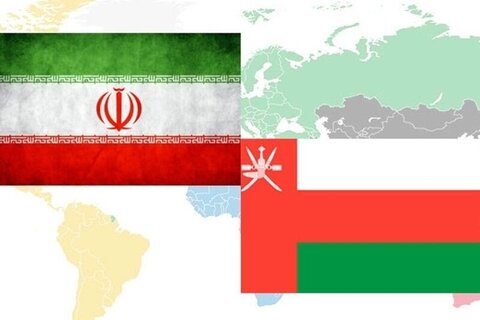Iran (IMNA) - Iranian President Ebrahim Raeisi, who visited the country in May last year and saw the signing of a number of bilateral commercial agreements, extended him an invitation for his two-day stay.
Sultan Haitham's delegation in Tehran includes Omani foreign minister Sayyid Badr bin Hamad Al Busaidi, as well as high-ranking defense, investment, and royal officials.
The important meeting will focus on ways to enhance diplomatic and economic ties between Iran and Oman, the two all-weather allies in the Persian Gulf.
Two-way commercial connections and investments will be the primary emphasis of Sultan Haitham's visit to Tehran, which comes at a time of significant regional events.
Both country's entrepreneurs and businessmen appreciated the visit and are optimistic that mutually beneficial trade and investment by the government and private sectors will surge significantly.
The two governments, who have had 50 years of strong diplomatic ties, are also likely to address the area's rapprochement movement and the elimination of foreign forces from the Persian Gulf region, with Oman acting as a strong mediator.
Potential reconciliation between Iran and Egypt, the reawakening of the 2015 nuclear agreement, and the relaxation of tough US sanctions are all expected to come up frequently in conversations between the two parties.
Potential economic gain
The Sultan of Oman's conversation with the Iranian leadership in Tehran, according to Jamal Razaghi, head of the Iranian side in the Omani-Iran Joint Business Council (OIJBC), would advance the interests of the two countries' people.
According to Razaghi, "I hope the two leaders' meetings will create more opportunities for trade, scientific, and medical cooperation between the two nations."
"Iran expects its commerce with Oman to reach $5 billion in value. Due to numerous economic prospects between the two governments, this is feasible. Iran sees Oman as an important strategic ally rather than just an economic market.
He stated that the sustainability of economic ties will be achieved by promoting joint investments and developing well-established systems for speeding the executive procedures for investment.
The official stated, "The business community is presently seeing joint investments and collaboration as a result of the strong connection established by the governing bodies of both countries over the past years.
The economic cooperation is one of the outcomes of the strong ties between the Sultanate of Oman and the Islamic Republic of Iran, according to Mohsen Darabi, a former president of the Iran Chamber of Commerce, Industries, Mines and Agriculture (ICCIMA).
"We are filled with hopes, especially given the current state of commercial agreements and crucial border crossings between the two countries. ICCIMA works to facilitate investments and supports Iranian and Omani businesses in both nations," he was quoted as sayig.
According to a report in the Omani media, Sultan Haitham's travel to Tehran and meeting with the Leader of the Islamic Revolution "will foster a new level of partnership and cooperation between the two governments." this was said by Ali Najafi Khoshroudi, the Iranian ambassador to Oman.
Additionally, Khoshroudi applauded the coordinated efforts undertaken to strengthen air and marine connections between Oman and Iran, noting that these " advances are expected to have an enormous effect on promoting trade and economic exchange between Tehran and Muscat."
The ambassador also recognized the advantages of exempting nationals of both countries from the need for travel visas.
Integrating the region
The growth of multilateral diplomatic ties and the bolstering of regional integration are both extremely important from a non-economic perspective as a result of the Sultan of Oman's visit.
Just one week after his journey to Egypt, Sultan Haitham is in Iran. According to Oman's official news agency, the Sultan of Oman and Egyptian President Abdel-Fattah El Sissi met in Cairo to discuss "overall regional and international developments."
According to Egyptian authorities, Cairo and Tehran are likely to exchange ambassadors as part of a process to mend fences between the two regional heavyweights, which is being navigated by Oman.
Oman's role as a mediator between the different countries in the area has substantially increased recently, ranging from the mending of relations to the release of prisoners.
Oman mediated the release of former Iranian diplomat Assadollah Assadi, who was imprisoned in Belgium following a bogus trial. On Saturday, Assadi returned home after five years.
In a pact mediated by China in March, Saudi Arabia and Iran decided to reestablish contact. Although the agreement was ultimately struck in China, the efforts to reduce tension were mediated for two years by Oman and Iraq.
Due to its crucial role in brokering the Joint Comprehensive Plan of Action (JCPOA), generally known as the Iran nuclear agreement, Oman is also involved in attempts to revive it.
In addition, Oman, against pressure from the US and the Israeli authorities, was the main architect of the improvement of ties between Syria and the Arab League.
Muscat is also acting as a go-between for Saudi Arabia and Yemen's Ansarullah movement.
Despite its small population and limited resources, Oman has developed a reputation as an efficient mediator in regional disputes and crises.


Your Comment